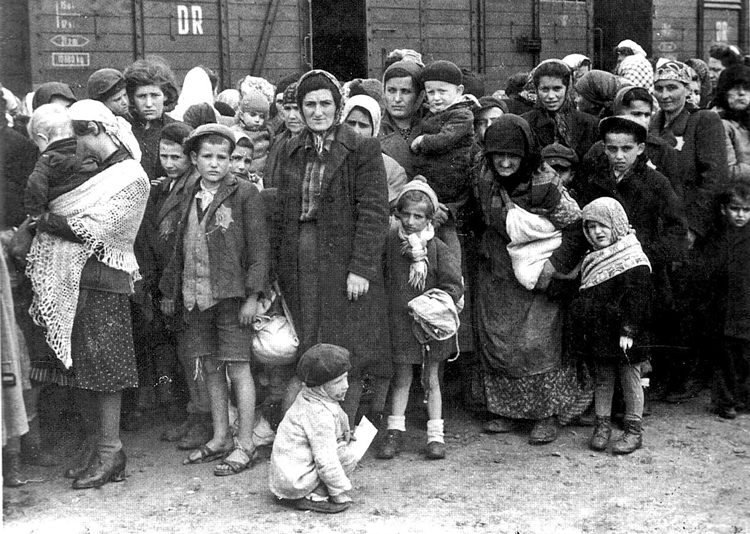Israel has existed as a refuge for Jews for 75 years. Its existence was made inevitable by three key historical facts: the betrayal by counterrevolutionary Stalinist parties of ripe prospects for workers to take political power in Europe; the refusal by the imperialist rulers in Washington and London to open their borders to Jews seeking to flee Nazi persecution before, during and after World War II; and the horror of the Holocaust, the slaughter of 6 million Jews — 40% of the Jews worldwide.
Coming out of Germany’s defeat in the first imperialist world war, the German economy was devastated. The victorious imperialist powers — especially Britain, as well as France and the rising capitalist rulers in the U.S — saddled the German rulers with massive reparations. By October 1923 a 1 trillion German mark note was worth only $15. The runaway economic crisis devastated the middle class.
The fascist German National Socialist Party, led by Adolf Hitler, emerged in this crisis, drawing on crushed petty bourgeois layers and demoralized workers. It launched physical assaults against Jews, unions and others. “The brown-shirted monsters do not even bother to conceal their aim: the physical extermination of every Jew in Great Germany,” the Socialist Workers Party National Committee explained in 1938.
To preserve their crippled economic and political rule, the German capitalist class swung behind the Nazis. The sizable German Communist Party, under Stalinist leadership, refused to close ranks with the Social Democratic Party to form a united front to mobilize the working class to take power. The CP campaigned on the slogan, “After Hitler comes us.”
This betrayal demobilized and demoralized millions of workers who had been looking for a call to action. It destroyed the possibility of a socialist revolution that could have prevented the second imperialist world war.
After Hitler came to power, Nazi storm troopers busted up union meetings, smashed the CP and SDP and launched an escalating campaign of assaults on the Jews.
With the signing of the Stalin-Hitler pact in 1939, the Stalinist Communist Party in the U.S. and elsewhere ended all opposition to the Nazi regime and the danger it posed to Jews.
Hitler made good on the promise to unleash the “Final Solution,” the Holocaust. Some two-thirds of European Jews were slaughtered, some in pogroms like the 1941 massacre in Babyn Yar in Ukraine, others in Hitler’s concentration camps. The chilling effects are still felt today. The world’s Jewish population is 1 million less than it was in 1939.
Despite deep illusions among Jews that they could rely on “democratic” imperialist governments to protect them, President Franklin D. Roosevelt and capitalist rulers in the U.K, Canada, Australia and elsewhere shut their doors to Jewish refugees.
“Let refugees into the United States! Open the doors to victims of Hitler’s Nazi terror!” the Socialist Workers Party demanded in a call to action in 1938. The SWP brought a class-struggle course against Jew-hatred into the unions. It organized a demonstration of 50,000 outside New York City’s Madison Square Garden in 1939 against the pro-Hitler German American Bund rallying inside. The class-collaborationist popular front line of the Communist Party demanded loyalty to Roosevelt.
A wave of working-class revolutionary struggles broke out after the war in France, Greece and Italy.
But once again, workers in those countries were betrayed by Stalinist parties. They hewed to Moscow’s line of subordinating workers’ interests to seeking long-term alliances with Washington and other imperialist governments in the name of “peaceful coexistence.”
Jews also faced a postwar wave of antisemitic attacks in Stalinist Russia, a thinly veiled drive against Jews under the banner of a war on “cosmopolitanism.”
Fight for refuge
The borders of the U.S., U.K. and elsewhere remained closed to Jews. The result was that by 1947, a quarter of a million Jews who had survived Nazi concentration camps were held in “displaced person camps” set up by the Allies in Germany, Austria and Italy. Many were former concentration camps or German army barracks, surrounded by barbed wire, where Jews suffered from shortages of food, clothing and medicine.
These conditions created a deep thirst for refuge. More Jews, including those who had opposed Zionism, began to look to Israel as a homeland where they could seek shelter. Some 4,500 refugees from the camps fled for Palestine on the Exodus ship in 1947, but the British, who then held Palestine in colonial bondage, forced them back to Europe.
Although Jews had lived in Palestine for thousands of years, in 1931 there were only 175,000 living there. By 1948, when Israel was formally recognized as a state, there were 650,000. Today, the Jewish population there is over 7 million and Jews continue to emigrate to Israel, seeking shelter from Jew-hatred and discrimination.
“Israel had to be and has to be a refuge for the Jews,” Rachele Fruit, SWP candidate for U.S. Senate from Florida, said in an Oct. 10 statement the party campaigns with all across the country. She said the road to end antisemitism and eliminate capitalist exploitation and oppression is through class struggle and a socialist revolution.
“Only the working classes of Israel, Palestine, Iran, and the whole region,” she said, “can find a solution in their common interests.”


